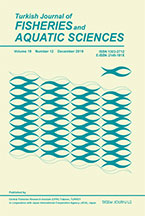Horticultural Studies (HortiS)
2019, Vol 36, Num, 1 (Pages: 41-45)
Determination of the effect of Isaria fumosorosea against Tyrophagus neiswanderi (Acari: Acaridae), a spinach pest
Musa KIRIŞIK 1 ,Emine TOPUZ 1
1 Batı Akdeniz Tarımsal Araştırma Enstitüsü, Antalya
DOI :
10.16882/derim.2019.444321
Viewed :
3433
-
Downloaded :
1511
Tyrophagus sp. has been reported as a pest on melon, watermelon, cucumber, pumpkin, tomato, pepper and onions plants in Japan. In greenhouses, it is known to be harmful on spinach and lettuce. Tyrophagus neiswanderi (Acari: Acaridae) is generally known to be harmful to various ornamental plants (gerbera, narcissus, tulip, iris and cyclamen) and vegetables (especially Cucurbitacae family). In this study, the effect of Isaria fumosorosea strain PFs-1 (an entomopathogen fungus registered to T. urticae and P. ulmi) against T. neiswanderi for which no registered acaricide there is in our country. The T. neiswanderi population used in the study was obtained from a greenhouse where spinach was produced in the Topçular region of Antalya province. Population of T. neiswanderi collected from the greenhouse was reared on clean cowpea plant in climatic conditions of 24 ± 1°C, 16: 8h (light: dark) and 60 ± 5% relative humidity. In this study, 5 different doses of I. fumosorosea (0.5x108, 1x108, 2x108, 4x108, 8x108 cfu ml-1) were tested on T. neiswanderi adults in the laboratory. In bioassays for I. fumosorosea, contact effect of the fungus was investigated using the spray-tower with four replicates in laboratory. In the 3rd and 6th day after the application, living and dead individuals were counted. In populations, the percentages of death obtained for 5 different doses of I. fumosorosea strain PFs-1 varied between 16-100%. As a result of application, maximum deaths in adults were observed at the end of 6th day and it was determined that the appropriate dose was 5x108 cfu ml-1, although it changed according to the doses. The results obtained under the controlled conditions in the laboratory are promising for the control of T. neiswanderi.
Keywords :
Entomopathogen fungi; Greenhouse; Vegatable; Pest














